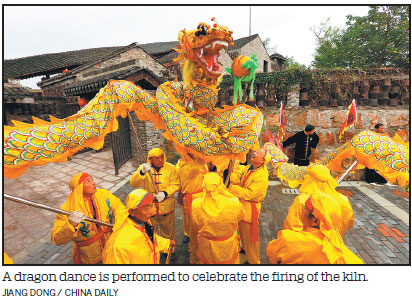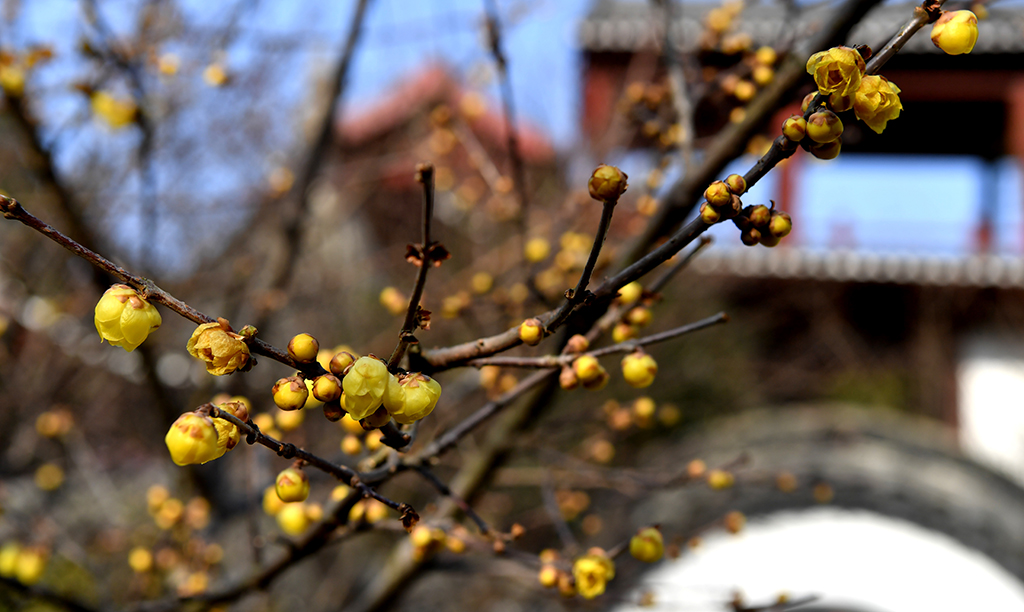Pottery fires interest of visitors to ancient town

Dingshu town in Yixing city, Wuxi, Jiangsu province, is a window into the city's long history of pottery production, foreign journalists discovered during their tour of the province last November.
Located in the southeast of Yixing, the town has more than 5,000 years of history producing pottery and is renowned for its Qianshu dragon-patterned kilns.
The kiln was first built in the Ming Dynasty (1368-1644) and there is only one kiln still working in Yixing that employs the traditional methods for pottery firing.
It is 43 meters long and is composed of three parts: the head, body and end. Every spring, local people would hold a ceremony at the time of the first kiln firing to pray to the god of fire.
Chu Chengliang, director of the tourism office at Dingshu town, said that the dragon-pattern kiln fires pottery once a month and produces about 6,000 to 7,000 pottery pots at a time.
The kiln mainly uses pine trees and bamboo branches as the fuel, Chu said.
"The pottery pots fired by the dragon-pattern kiln vary in their appearances and size," he said, adding that local craftsmen also use paintings to cover any flaws resulting from firing.
Nowadays, with the faster pace of life, people tend to utilize natural gas and electricity for pottery firing and this type of traditional method is rare in China, according to Chu.
Most people regard this art as unique and are inclined to collect such pottery, he said.
"This is the old way of producing pottery and represents a trend to return to nature."
Rufat Rustamov, a journalist with Azerbaijan-based news agency Azvision, said that there is of course pottery produced in the rest of the world, but it was very different from that made in China.
In Dingshu, he said, he particularly admires the dragon-shaped kiln.
"We have similar pottery products in our country but they are produced in different ways," he said, adding that people in the town are more inclined to make pottery by hand, which requires a lot of concentration and attention.
He said the production of pottery in the town shows the passion and attention of the local people.
Known as a pottery capital, Yixing has a pottery making history spanning over 7,000 years, according to Chu.
There are six preserved dragon kilns in Yixing city, four of which are in Dingshu town and are all included in the list of the national key cultural monuments, Chu said.



